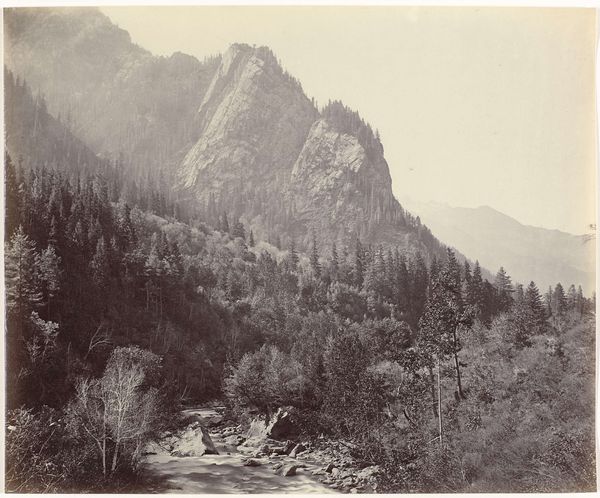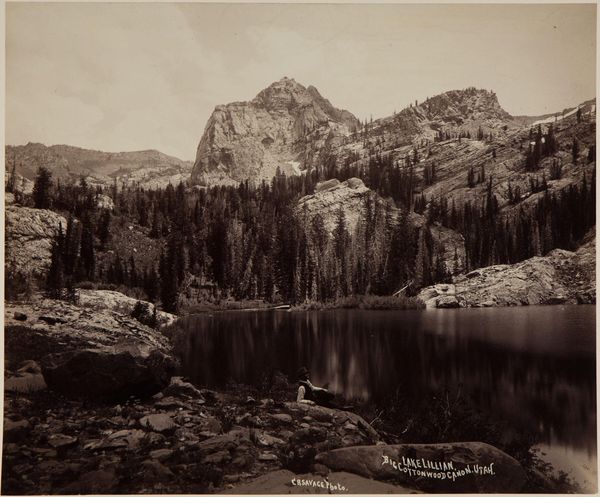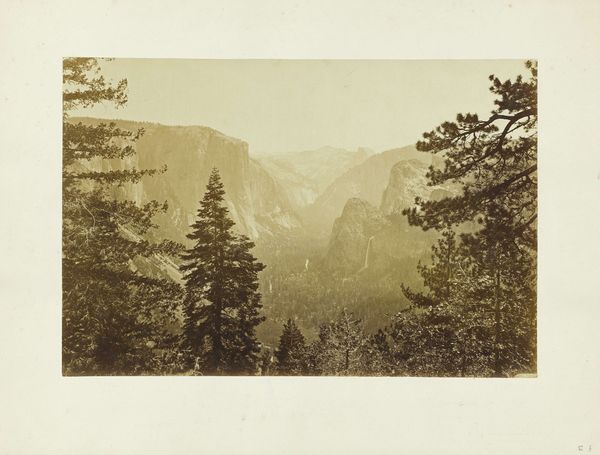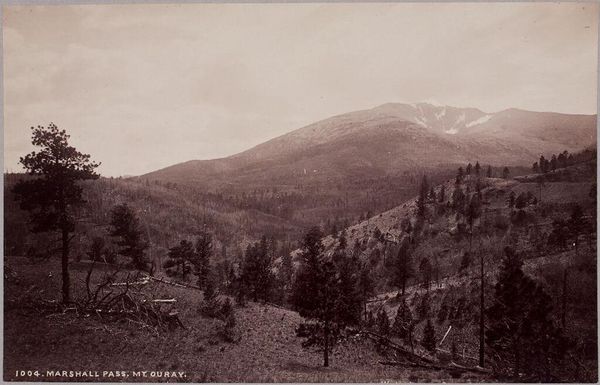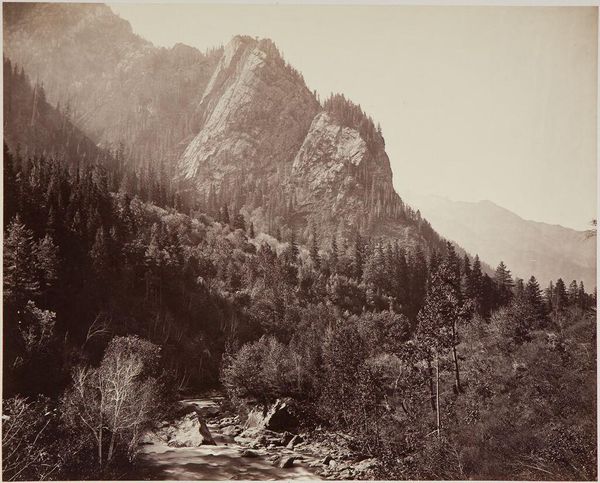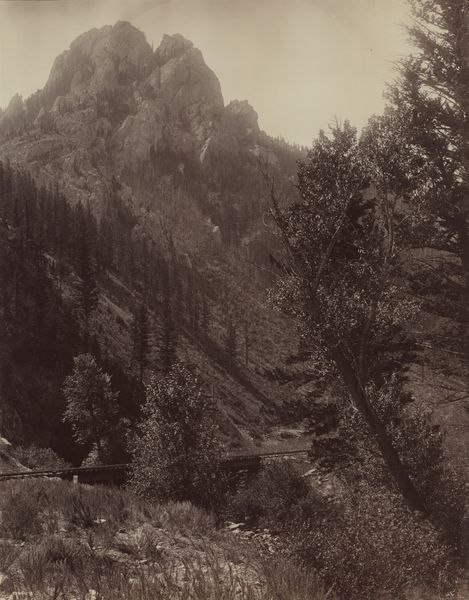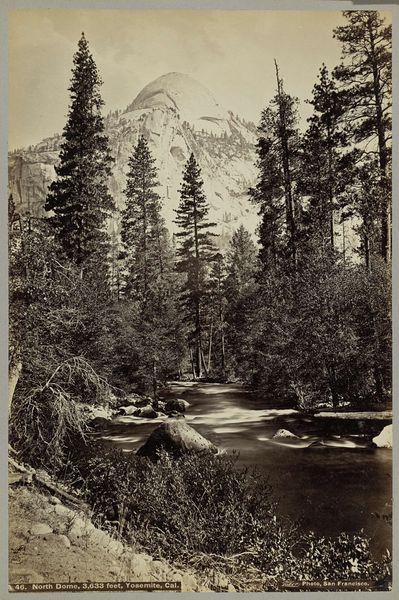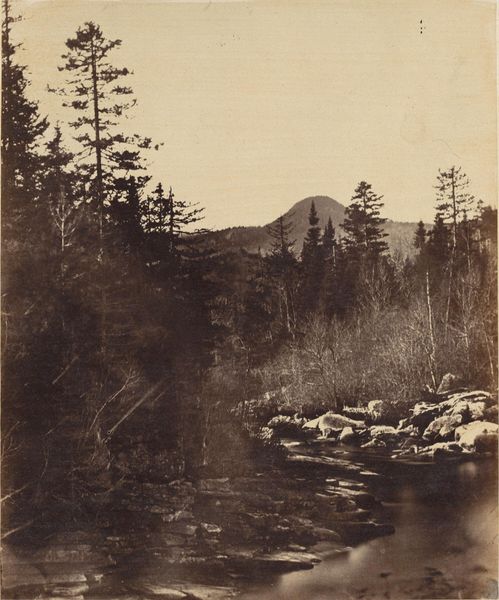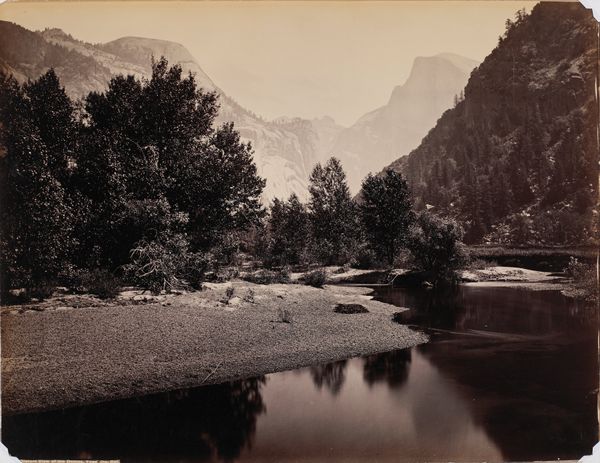
photography, gelatin-silver-print
#
landscape
#
photography
#
gelatin-silver-print
#
hudson-river-school
Dimensions: image: 40.32 x 52.71 cm (15 7/8 x 20 3/4 in.) plate: 45.56 x 58.42 cm (17 15/16 x 23 in.) mount: 55.09 x 68.42 cm (21 11/16 x 26 15/16 in.)
Copyright: National Gallery of Art: CC0 1.0
Carleton Watkins made this photograph, "Downeville Butte," using a wet plate collodion process, a popular method in the 19th century that allowed for incredibly detailed images. Watkins, like many landscape photographers of his time, played a crucial role in shaping perceptions of the American West, just as its population was changing radically. His images, while seemingly objective, were deeply embedded in the era's expansionist ideologies. Watkins was commissioned to capture the grandeur of the West, encouraging settlement and resource extraction. The almost spiritual quality of the image, with the imposing butte shrouded in a soft haze, belies the complex relationship between nature and culture. The image is silent on how westward expansion impacted indigenous communities. This view omits the displacement and erasure that came with this romanticized vision of untouched wilderness. Watkins’ photographs continue to provoke questions about whose stories are told and whose are left out, and what the emotional impact of the narrative of the landscape may be.
Comments
No comments
Be the first to comment and join the conversation on the ultimate creative platform.
